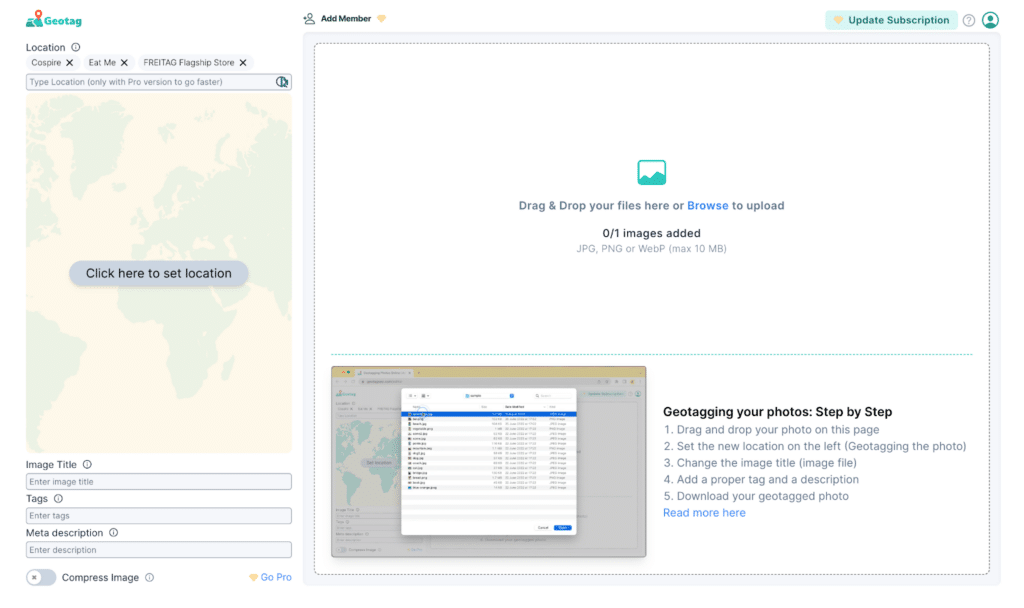If you are a local business owner, taking in this 10-minute read will make a positive impact.
Chris Thomson here. As the Search & Advertising manager at Pronto Marketing, I’ve helped countless small businesses boost their online visibility. I know the immense value of honing in on potential customers right in your backyard.
So, let me ask you this – have you noticed the cafe on the next block always seems packed while your tables sit empty? Do neighbors rave about the barber down the road but hardly know your salon exists? I had a feeling your online presence could use some local love.
Well, I’m here to let you in on easy-to-implement tactics that could change everything – hyperlocal SEO.
In this short article, I dig into exactly what hyperlocal SEO is, why it’s so critical for brick-and-mortars like yours, and how to leverage location-based keywords, Google My Business profiles, and geo-targeted content to dominate the search results in your specific neighborhood, street, or radius around your business.
I also highlight common pitfalls that could tank your hyperlocal SEO efforts and send traffic to your competitors instead. Let’s get right into it.
Quick SEO Stats for Local Businesses
✅ 87% of customers use Google to evaluate local businesses 1.
✅ 42% of local searches result in clicks on the Google 3-Pack 1.
✅ 97% of people search online to learn about a local company or organization 2.
✅ 76% of people end up visiting a business within 1 day of searching for something nearby 2.
✅ Google Maps searches for “shopping near me” have grown globally by more than 100% year over year 2.
✅ Mobile searches for “store open near me” also grew by over 250% in a recent two-year period 2.
What Exactly Is Hyperlocal SEO?
Simply put, hyperlocal SEO is applying traditional SEO efforts to rank for search queries in a very concentrated geographical area. I’m talking just around your block or a few mile radius max.
To give you a better understanding, here is a comparison table contrasting traditional SEO, Local SEO, and Hyperlocal SEO:
| Traditional SEO | Local SEO | Hyperlocal SEO | |
| Geographic Scope | National or global reach | City or region level | Just around your neighborhood |
| Keyword Targeting | Broad industry keywords | Adds city or area names | Focuses on specifics like street names, landmarks |
| Ranking Difficulty | High competition | Medium competition | Lower competition in micro region |
| Conversion Rates | Lower due to irrelevant reach | Improves for physical locations | Highest due to nearby customer proximity |
The key differences come down to the geographic specificity of the keywords targeted.
So for example, instead of trying to rank for broader terms like “Jacksonville breakfast spots”, you’d optimize for tighter searches like “Riverside breakfast” or “breakfast near Five Points”. Honing in on a micro-location can help you pick off low hanging fruit.
Hyperlocal SEO goes to an extreme micro level to just target potential customers in a discrete neighborhood or area right around your business location. Doing so filters out irrelevant traffic and drives conversions from nearby searchers.
The Benefits of Micro-Targeting Locals
Optimizing for hyperlocal searches helps you:- Target customers who are most likely to actually visit your business based on proximity
- Stand out from competitors who rank nationally or city-wide
- Build a strong grip on all the search traffic on your turf
- Save money on ads and SEO agencies by laser focusing your budget
- Identify and plug gaps where you’re losing out to neighborhood rivals
5 Steps to Dominate Local Search with Hyperlocal SEO
Step 1: Research Neighborhood Nicknames & Landmarks
To start, get clear on the exact geographical boundaries you want to target. Make a list of:
- Official neighborhood names
- Local shortcuts & nicknames residents use – example “SoBro” for South Bronx
- Nearby landmarks like parks, monuments, bridges
- Major employers, hospitals, or colleges if applicable
This helps you brainstorm the keywords and phrases locals are actually punching into Google when looking for businesses like yours.
Pro Tip: Don’t just go by official maps and names. Talk to customers and neighbors to discover off-the-beaten-path spots the locals refer to.
Step 2: Pick Your Hyperlocal Keywords
Next, build a master list of keyword variations using your geo-targets from step one. Think through all the search queries you want to rank for.
To help, there is a wealth of keyword research tools available that can help and that show things like search volume and expected competition including:
I personally like Ahrefs best, so I will dive deeper into exactly how to leverage it to research and identify your most viable hyperlocal keyword targets.
First, log into Ahrefs and use the Keyword Explorer. Start by inputting your core keyword ideas around location and service.
For example, if you were a dentist in Brooklyn’s cobble hill neighborhood, start by entering:
- dentist cobble hill
- cobble hill dental
- dentist brooklyn heights

Review the suggested keywords and their search volume. Look for location-based long tail variants with healthy volume but low difficulty scores. This signals opportunity.
Now in the bar graph filter by Keyword Difficulty (KD). Look at keywords scoring 30 or below to focus on low hanging fruit first. Toggle between volume and difficulty views.
“cobble hill dental” looks like a great opportunity. A keyword difficulty of “2” means it’s not going to take mountains of time, links, and SEO-optimized content to rank. And while a monthly search volume of 50 might seem low, remember that conversion rates are generally higher for hyperlocal keywords like this.
When you find good targets like this one, add them to Keyword Tracking. Continue playing around with location names, landmarks, border areas, roads, etc until you have a robust hyperlocal keyword list.
Regularly revisit Ahrefs to monitor rankings for your targets. Are you climbing for that “dentist vinegar hill” term? If not, tweak your content to specifically optimize around it.
Keep building and expanding this hyperlaser list over time. I’d focus on 25-50 core targets for smaller areas, and 100+ keywords for metro location campaigns.
The key is continuous research, tracking, testing and optimizing until you own the first page for all hyperlocal terms that convert.
Now, Ahrefs is a paid tool, but there is a free trial available if you just want to dip in and out.
Pro Tip: Use Google’s autocomplete suggestions to discover more keyword ideas. Just start typing “dentist near” and it will populate options like “dentist near fifth avenue”.
Step 3: Optimize Google My Business (GMB)
This is hands down the most vital piece of hyperlocal SEO.
Log into Google My Business and complete your profile 100%. Upload photos, fill in hours and special events, encourage customer reviews, the works.
This is a HUGE topic. I wrote a great guide for my company’s blog to help you set things up optimally. If you are serious about hyperlocal SEO and getting more local customers, I strongly suggest you give it a read. 👇
Google Maps Marketing: Tips to Optimize Your Listing and Local Ranking
After you set up and optimize your profile, visit your listing on Google Maps on desktop and mobile to make sure your business info shows up accurately. Keep checking back periodically to make edits as needed.
This signals Google that you actively maintain your listing and gets all your vital info front and center in local search – even creating that coveted Map Pack result.
Pro Tip: Leverage tools like Bright Local to manage all major directory listings beyond Google like Yelp and Apple Maps in one dashboard. Keeping NAP (name, address, phone) details consistent bolsters local SEO authority.
Pro Tip: Schedule social media images from the geo-tagged photo bank you build so they continue seeding visual interest tied to your hyperlocal targets.
Step 5: Craft Location-Based Content
Okay, now for the fun part – creating blog posts and social content laced with those place-based keywords.
You essentially want to become an authority on happenings in your micro region. Share local events, neighborhood history tidbits, area shopping/dining guides, seasonal content – you name it.
Example blog headlines:
- The Top 5 Estate Planning Mistakes Capitol Hill Families Make
- Preventing Running Injuries: Tips for Hampstead Road Race Participants
- Franklin Park Residents: When to Start Tax Planning for 2024 Returns
- This Year’s Hail Storms and How Wicker Park Homeowners Can Protect Roofs
Blend specific location references naturally within posts to tap into hyperlocal searches. Comment on new city developments and regulations impacting your field of expertise.
Pro Tip: Repurpose portions of this thought leadership content for community paper articles and professional association guest posts. This builds more local links and awareness.
Step 4: Get Visual with Geo-Tagged Images
In our scroll and double-tap world, people love visual content. Use high-quality images on your website, blogs, GMB profile, and social media. Make sure to geo-tag them with your location.
Geo-tags allow Google to match photos to nearby searches. For example, a recent study found 42% of people click on images for nearby places. So think through what would compel people to click for your business – shots of your shopfront, popular menu items, store interior, a recent sidewalk sale event.
GeoTagSEO is a great tool for enhancing local SEO by embedding geographical data into images. Here’s how to use it:

- Upload your photo to GeoTagSeo.com
- Set the geolocation by searching or using the map
- Enter a descriptive title for the image
- Add relevant tags and a meta description
- Download the geotagged image, optionally compressing it for web use
Avoid These Common Pitfalls
Alright, last but not least – let me call out frequent issues I see torpedoing hyperlocal SEO campaigns:
🚫 Using broad keywords that attract customers too far to realistically visit
🚫 Poorly optimizing your Google My Business profile
🚫 Missing out on listings in local directories
🚫 Ignoring content marketing as a method to rank for hyperlocal keywords
🚫 Not monitoring rankings using tracking tools to catch dips
Steer clear of these pitfalls, stick to the tactics I laid out above, and I have no doubt you’ll soon dominate the hyperlocal search results.
Conclusion & Recap
There’s a lot to take in here, so let me leave you with a quick recap of the keys to small business search success:
Research Geographic Pet Names & Boundaries
Start by clearly defining your target geographical area. Get crystal clear on neighborhood nicknames, borders, landmarks and holes-in-the wall spots. Talk to locals to discover gems map apps would miss. This fuels killer keyword research.
Pick the Hyperlocal Fruit
Brainstorm every single search variation locals punch in when looking for businesses like yours – combining your geographical targets with relevant category keywords. Identify low competition long-tails ripe for targeting.
Complete Online Listings
Make 100% sure to optimize and maintain your Google My Business listing plus any other major directories. This gets your hours, photos, special offers and more ranking right in local results. Appoint someone to monitor and upload fresh content monthly.
Get Snapping
Use geo-tagged, enticing photos across your website and social channels. Remember, images related to your neighborhood and business type could lead to 42% more clicks. Schedule social posts to distribute these over time.
Become a Town Ally
Publish location-based content regularly – guides, local advice pertaining to your industry, and more. Inspire people to follow your business as a reliable neighborhood ally. Guest post content to area blogs to build local links.
Stick to this hyperlocal SEO blueprint week in and week out, and I guarantee you’ll squeeze every last drop of opportunity out of your micro region. You’ll strangle competitors through search and transform unfamiliar passerbyers into loyal regulars.
If you have any questions about hyperlocal SEO, we at Pronto are available for a free chat with you.
About Pronto Marketing
Pronto Marketing is a leading WordPress Management and SEO Agency, specializing in helping businesses enhance their online presence through a wide range of digital marketing services.
As a full-service agency, Pronto is committed to providing affordable plans and expert support in WordPress website development, SEO, and other digital marketing services ensuring every aspect of a company’s online presence is strategically managed for growth.




